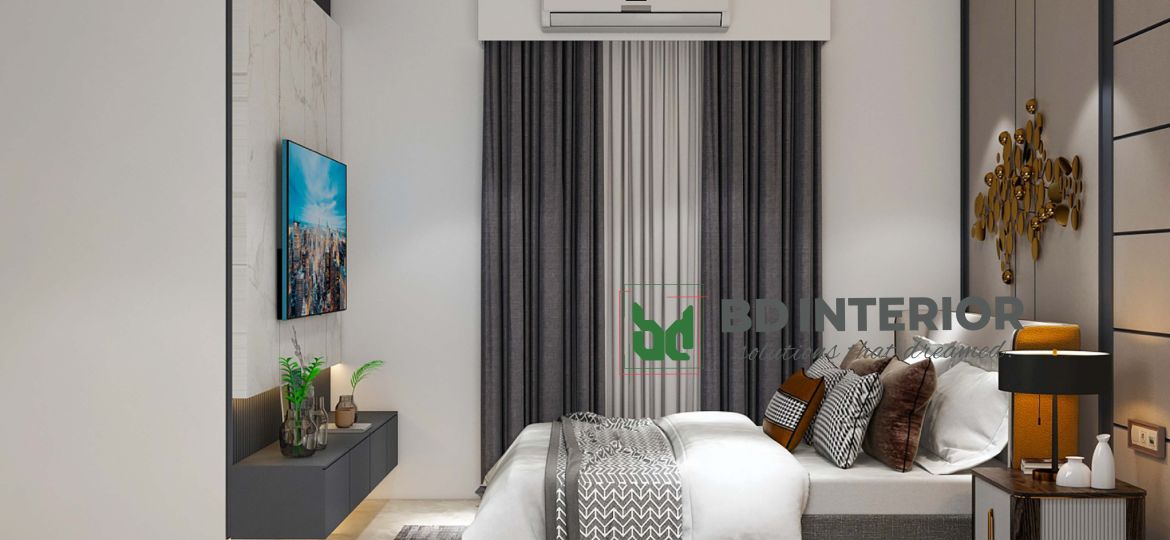
Maximize Space and Comfort: Expert Bed Placement Strategies
When it comes to designing a bedroom, the placement of your bed is one of the most crucial decisions. A well-placed bed can enhance the room’s functionality, aesthetic appeal, and overall comfort. In this blog, we’ll explore expert strategies to maximize space and comfort through smart bed placement.
1. Understand the Room Layout
Before deciding on bed placement, thoroughly assess the room’s layout. Consider the following:
• Size and Shape: Measure the dimensions of your bedroom to understand the available space. Note any architectural features such as windows, doors, and built-in storage.
• Traffic Flow: Ensure there’s a clear path for movement. Avoid placing the bed where it obstructs walkways or creates congestion.

2. Prioritize Natural Light
Natural light plays a significant role in creating a pleasant and inviting bedroom atmosphere. Here’s how to leverage it:
• Window Views: Position the bed to take advantage of natural light without causing glare. If possible, place the headboard against a wall opposite or adjacent to the windows.
• Curtains and Blinds: Use light-filtering curtains or blinds to control the amount of light entering the room, ensuring a balance between brightness and privacy.

3. Consider Feng Shui Principles
Feng Shui, the ancient Chinese art of placement, can offer valuable insights into bed positioning for optimal energy flow:
• Commanding Position: Place the bed diagonally opposite the door, allowing a clear view of the entrance without being directly in line with it. This position is believed to promote a sense of security and control.
• Balanced Sides: Ensure there’s equal space on both sides of the bed, symbolizing balance and harmony. This setup also facilitates easier access for both partners.

4. Optimize Wall Space
Using walls effectively can free up floor space and create a more organized bedroom:
• Headboard Wall: Placing the bed against a sturdy wall provides stability and anchors the room’s design. Avoid positioning the bed under a window or in the middle of the room.
• Built-In Storage: If your bedroom is small, consider incorporating built-in storage solutions such as shelves or cabinets around the bed to maximize space.
5. Embrace Symmetry
Symmetry can enhance the visual appeal and functionality of your bedroom:
• Nightstands: Place matching nightstands on either side of the bed. This not only looks aesthetically pleasing but also provides practical storage for nighttime essentials.
• Lighting: Use identical bedside lamps to create a balanced and harmonious look. Adjustable wall sconces can save space and offer flexible lighting options.
 6. Make Use of Corners
6. Make Use of Corners
In smaller bedrooms, corner placement can be a smart way to save space:
• Diagonal Positioning: Placing the bed diagonally in a corner can make the room feel more spacious and create a unique focal point.
• Corner Beds: Consider custom or built-in corner beds, which are especially useful in children’s rooms or guest bedrooms to maximize floor space.
7. Think About Ceiling Height
The height of your ceiling can influence the perception of space in your bedroom:
• Low Ceilings: Avoid placing the bed directly under a low ceiling or sloped roof. Opt for a lower headboard to create a sense of openness.
• High Ceilings: Use a taller headboard to add vertical interest and draw the eye upwards, emphasizing the room’s height.
8. Adapt to Room Functions
Consider how your bedroom functions beyond just sleeping:
• Multi-Functional Spaces: If your bedroom doubles as a workspace or reading nook, position the bed to separate these areas clearly. Use rugs, screens, or furniture arrangements to define distinct zones.
• Entertainment: If you have a TV or entertainment setup, ensure the bed is positioned for comfortable viewing without compromising the room’s flow.
Conclusion
Effective bed placement is a blend of practicality, aesthetics, and personal preference. By considering factors like room layout, natural light, Feng Shui principles, and the overall function of the space, you can create a bedroom that maximizes both space and comfort. Remember, the goal is to design a sanctuary that promotes restful sleep and enhances your daily living experience. Happy decorating!